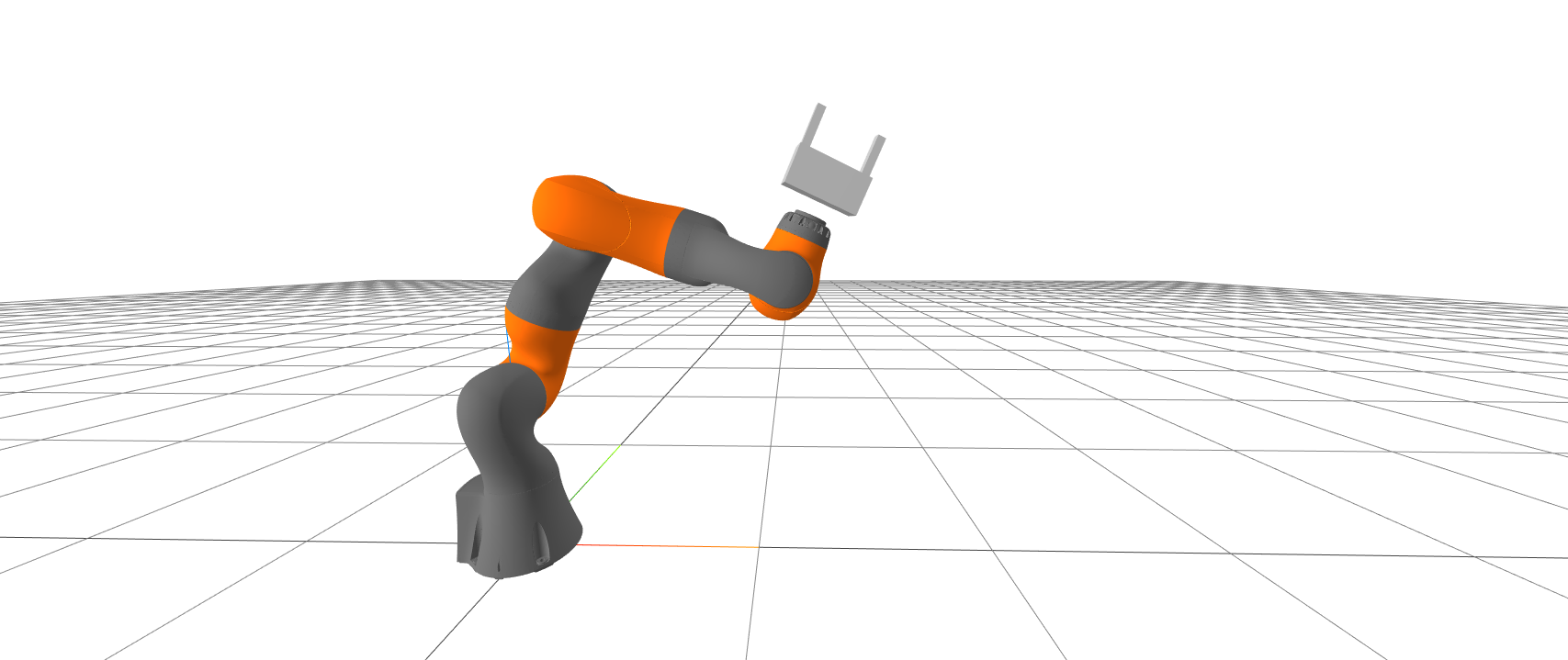Model-based RL / Intuitive Physics

MIT 6.800/6.843:
Robotic Manipulation
Fall 2021, Lecture 21

Follow live at https://slides.com/d/YPYIYRA/live
(or later at https://slides.com/russtedrake/fall21-lec21)
As more people started applying RL to robots, we saw a distinct shift from "model-free" RL to "model-based" RL.
(most striking at the 2018 Conference on Robot Learning)
IFRR global panel on "data-driven vs physics-based models"
(caveat: I didn't choose the panel name)
What is a (dynamic) model?
System
State-space
Auto-regressive (eg. ARMAX)
input
output
state
noise/disturbances
parameters
Lagrangian mechanics,
Recurrent neural networks (e.g. LSTM), ...
Feed-forward networks
(e.g. \(y_n\)= image)
What is a (dynamic) model?
System
State-space
Auto-regressive (eg. ARMAX)
input
output
Models come in many forms
input
cost-to-go
Q-functions are models, too. They try to predict only one output (the cost-to-go).
As you know, people are using Q-functions in practice on non-Markovian state representations.
\[ Q^{\pi}(n, x_n,u_n, \theta) \]
Model "class" vs model "instance"
- \(f\) and \(g\) describe the model class.
- with \(\theta\) describes a model instance.
"Deep models vs Physics-based models?" is about model class:
Should we prefer writing \(f\) and \(g\) using physics or deep networks?
Maybe not so different from
- should we use ReLU or \(\tanh\)?
- should we use LSTMs or Transformers?
Galileo, Kepler, Newton, Hooke, Coulomb, ...
were data scientists.

They fit very simple models to very noisy data.
Gave us a rich class of parametric models that we could fit to new data.
What if Newton had deep learning...?
Galileo's notes on projectile motion
What makes a model class useful?
"All models are wrong, but some are useful" -- George Box
Use case: Simulation
e.g., for
- generating synthetic training data
- Monte-Carlo policy evaluation
- offline policy optimization
What makes a model class useful?
- Reasonable: \( y_{sim}(u) \in \{ y_{real}(u) \} \)
- Coverage: \( \forall y_{real}(u), \exists y_{sim}(u) \)
- Accuracy: \( p(y_{real} | u) \approx p(y_{sim} | u) \)
- Corollary: Reliable system identification (data \( \Rightarrow \theta \))
- Generalizable, efficient, repeatable, interpretable/debuggable, ...

Use case: Online Decision Making (Planning/Control)
What makes a model class useful?
- Reasonable, Accurate, Generalizable, ...
- Efficient / compact
- Observable
- Task-relevant
State-space models tend to be more efficient/compact, but require state estimation.
- Ex: chopping onions.
- Lagrangian state not observable.
- Task relevant?
- Doesn't imply "no mechanics"
vs.
Auto-regressive
State-space
Occam's razor and predicting what won't happen
Perhaps the biggest philosophical difference between traditional physics models and "universal approximators".
- \( f,g\) are not arbitrary. Mechanics gives us constraints:
- Conservation of mass
- Conservation of energy
- Maximum dissipation
- ...
- Arguably these constraints give our models their structure
- Control affine
- Inertial matrix is positive definite
- Inverse dynamics have "branch-induced sparsity"
- Without structure, maybe we can only ever do stochastic gradient descent...?
The failings of our physics-based models are mostly due to the unreasonable burden of estimating the "Lagrangian state" and parameters.
For e.g. onions, laundry, peanut butter, ...
The failings of our deep models are mostly due to our inability to due efficient/reliable planning, control design and analysis, to make sufficiently accurate long-horizon predictions, and to generalize under distribution shift.
I want the next Newton to come around and to work on onions, laundry, peanut butter...

American Controls Conference (ACC), 1991
Dense Object Nets for Model-Predictive Control (MPC)
Learn descriptor keypoint dynamics + trajectory MPC
Learn descriptor keypoint dynamics + trajectory MPC
Some take-aways:
- Can train a network to predict keypoint dynamics even for complex tasks ("hat on rack").
- But planning/control is still hard.
Lucas at his defense: "Perception doesn't feel like the bottleneck anymore; it fees like the bottleneck is control."
The Onion Problem
H.J. Terry Suh and Russ Tedrake. The surprising effectiveness of linear models for visual foresight in object pile manipulation. To appear in Workshop on the Algorithmic Foundations of Robotics (WAFR), 2020

The Onion Problem

Target Set
Carrot
The big question:
When is feedback "from pixels to torques" easy?
Problem Statement
Find a single policy (pixels to torques) that is invariant to the number of carrot pieces.
- Objective: Move all carrot pieces to a “target set” on the cutting board.
- Inputs (actions): Discrete push, parameterized from (x1, y1) to (x2, y2)
- Outputs (observations): Images, I[n], or vectorized images y[n]

Try images as the state representation.

A control-Lyapunov function in image coordinates


Requires a forward model...
Crazy: Try a linear model (for each discretized action)



Each row of is an image, the "receptive field" of

My take-aways:
-
Not saying that linear models are better than deep.
- In fact: Yunzhu Li has now done better with a CNN.
- This won't work for most problems.
- When is pixels-to-torques easy?
- One answer: When each pixel moves independently
- Image acts like a probability density, dynamics as a transition matrix.




LEARNING INVARIANT REPRESENTATIONS FOR REINFORCEMENT LEARNING WITHOUT RECONSTRUCTION
Amy Zhang, Rowan McAllister, Roberto Calandra, Yarin Gal, Sergey Levine
ICLR 2021


from "Draping an Elephant: Uncovering Children's Reasoning About Cloth-Covered Objects" by Tomer Ullman et al, 2019